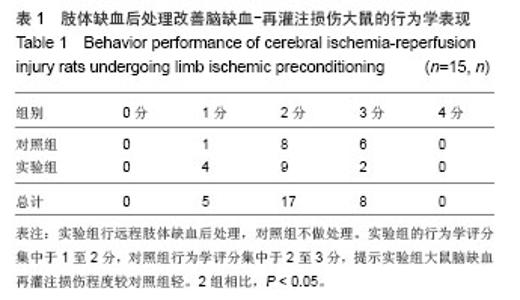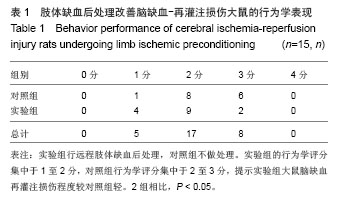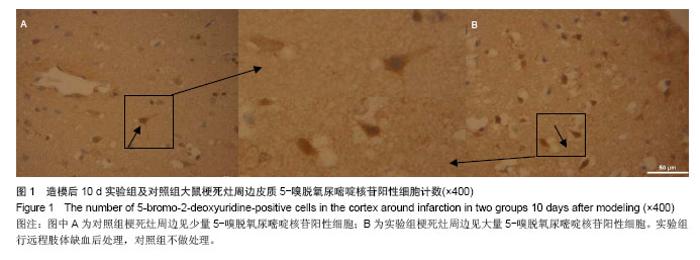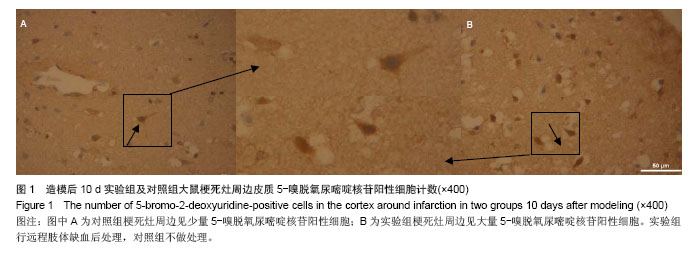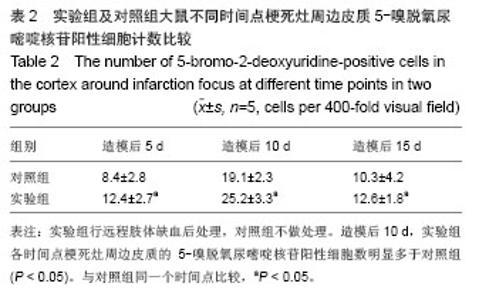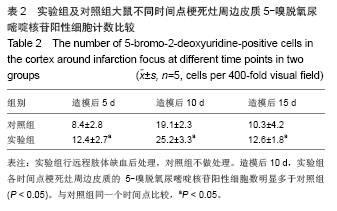| [1]赵瑾,李杨,黄磊,等.肢体缺血后适应对小鼠脑缺血再灌注损伤的影响及机制[J].中国病理生理杂志,2010,26 (6):1096- 1101.
[2]彭蓓,郭曲练,贺智晶.一氧化氮参与肢体缺血后处理对全脑缺血-再灌注损伤的保护作用[J].临床麻醉学杂志, 2012, 28(9): 901-904.
[3]Baxter GF, Yellon DM. Current trends and controversies in ischemia-reperfusion research-Meeting report of the Hatter Institute 3rd International Workshop on Cardioprotection. Basic Res Cardiol. 2003; 98(2): 133-136.
[4]Skyschally A,Schulz R,Heusch G. Pathophysiology of myocardial infarction: protection by ischemic pre- and postconditioning. Herz. 2008; 33(2): 88-100.
[5]Jang YH, Kim JH, Ban C, et al. Stromal cell derived factor-1 (SDF-1) targeting reperfusion reduces myocardial infarction in isolated rat hearts. Cardiovasc Ther. 2012; 30(5): 264-272.
[6]Yang XM, Liu Y, Cui L, et al. Platelet P2Y12 blockers confer direct postconditioning-like protection in reperfused rabbit hearts. J Cardiovasc Pharmacol Ther. 2013;18(3):251-262.
[7]Ren C, Yan Z, Wei D, et al. Limb remote ischemic postconditioning protects against focal ischemia in rats. Brain Res. 2009; 1288: 88-94.
[8]Hu X, Xie C, He S, et al. Remifentanil postconditioning improves global cerebral ischemiainduced spatial learning and memory deficit in rats via inhibition of neuronal apoptosis through the PI3K signaling pathway. Neurol Sci. 2013; 34(11): 1955-1962.
[9]Peng B, Guo QL, He ZJ, et al. Remote ischemic postconditioning protects the brain from global cerebral ischemia/reperfusion injury by up-regulating endothelial nitric oxide synthase through the PI3K/Akt pathway. Brain Res. 2012; 1445: 92-102.
[10]中华人民共和国科学技术部. 关于善待实验动物的指导性意见. 2006-09-30.
[11]Longa EZ, Weinstein PR, Carlson S, et al. Reversible middle cerebral artery occlusion without cranioctomy in rats. Stroke. 1989; 20(1):84-91.
[12]Najafi M. Effects of Postconditioning, Preconditioning and Perfusion of L-carnitine During Whole Period of Ischemia/ Reperfusion on Cardiac Hemodynamic Functions and Myocardial Infarction Size in Isolated Rat Heart. Iran J Basic Med Sci. 2013; 16(4): 648-655.
[13]Muscari C, Giordano E, Bonafè F. Molecular mechanisms of ischemic preconditioning and postconditioning as putative therapeutic targets to reduce tumor survival and malignancy. Med Hypotheses. 2013; 81(6):1141-1145.
[14]Zhao HG, Li WB, Li QJ, et al. Limb ischemic preconditioning attenuates apoptosis of pyramidal neurons in the CA1 hippocampus induced by cerebral ischemia-reperfusion in rats. Sheng Li Xue Bao. 2004; 56(3): 407-412.
[15]姜红升,涂悦,程世翔,等.肢体缺血后处理通过激活MAPK途径保护大鼠海马区缺血性神经元[J].解剖科学进展, 2011,17(1):4-7.
[16]Gritsopoulos G, Iliodromitis EK, Zoga A, et al. Remote Postconditioning isMore Potent than Classic Postconditioning in Reducing the Infarct Size in Anesthetized Rabbits. Cardiovasc Drugs Ther. 2009; 23(3):193-198.
[17]Zhou Y, Fathali N, Lekic T, et al. Remote limb ischemic postconditioning protects against neonatal hypoxic-ischemic brain injury in rat pups by the opioid receptor/Akt pathway. Stroke. 2011; 42(2): 439-444.
[18]赵瑾,赵士弟,黄磊,等.肢体缺血后处理对脑缺血-再灌注过氧化损伤的影响[J].蚌埠医学院学报, 2011,36(6): 551-553.
[19]Kerendi F,Kin H,Halkos M, et al. Remote posteonditioning: brief renal ischemia and reperfusion applied before coronary artery reperfusion reduce myocardial infarct size via endogenous activation of adenosine receptors. Basic Res Cardiol. 2005; 100(5):404-412.
[20]Grall S, Prunier-Mirebeau D, Tamareille S, et al. Endoplasmic reticulum stress pathway involvement in local and remote myocardial ischemic conditioning. Shock. 2013; 39(5): 433-439.
[21]Shinohara G, Morita K, Nagahori R,et al. Ischemic postconditioning promotes left ventricular functional recovery after cardioplegic arrest in an in vivo piglet model of global ischemia reperfusion injury on cardiopulmonary bypass. J Thorac Cardiovasc Surg. 2011; 142(4): 926-932.
[22]Yang XM, Philipp S, Downey JM, et al. Postconditioning's protection is not dependent on circulating blood factors or cells but involves adenosine receptors and requires PI3-kinase and guanylyl cyclase activation. Basic Res Cardiol. 2005; 100(1):57-63.
[23]Peart JN, Headrick JP. Adenosinergic cardioprotection: multiple receptors, multiple pathways. Pharmacol Ther. 2007; 114(2):208-221.
[24]Kerendi F, Kin H, Halkos ME, et al. Remote postconditioning. Brief renal ischemia and reperfusion applied before coronary artery reperfusion reduces myocardial infarct size via endogenous activation of adenosine receptors. Basic Res Cardiol. 2005; 100(5):404-412.
[25]Yang Z, Day YJ, Toufektsian MC, et al. Infarct-sparing effect of A2A-adenosine receptor activation is due primarily to its action on lymphocytes. Circulation. 2005; 111(17):2190-2197.
[26]Tsang A, Hausenloy DJ, Mocanu MM, et al. Postconditioning: a form of "modified reperfusion" protects the myocardium by activating the phosphatidylinositol 3-kinase-Akt pathway. Circ Res. 2004; 95(3): 230-232.
[27]Rehni AK, Singh N. Role of phosphoinositide 3-kinase in ischemic postconditioning-induced attenuation of cerebral ischemia-evoked behavioral deficits in mice. Pharmacol Rep. 2007; 59(2):192-198.
[28]Eriksson PS, Perfilieva E, Björk-Eriksson T, et al. Neurogenesis in the adult human hippocampus. Nat Med. 1998; 4(11):1313-1317.
[29]Camarasa MV, Galvez VM, Brison DR, et al. Optimized protocol for derivation of human embryonic stem cell lines. Stem Cell Rev. 2012; 8(3):1011-1020.
[30]Weiss S, Dunne C, Hewson J, et al. Multipotent CNS stem cells are present in the adult manunalian spinal cord and ventricular neuronaxis. J Neurosci. 1996; 16: 7599-7605.
[31]Palmer TD, Ray J, Gage FH, et al. FGF-2 responsive neuronal progenitors reside in proliferative and quiescent regions of the adult rodent brain. Mol Cell Neurocsci.1995; 6: 474-486.
[32]Johe KK, Haxel TG, Muller T, et al. Single factors direct the differentiation of stem cells from the fetal and adult central nervous system.Gene Dev.1996; 10:3129-3140.
[33]Takagi Y, Nozaki R, Takahashi J,et al. Proliferation of neuronal precursor cells in the dentate gyrus is accelerated after transient forebrain schemia in mice. B rain Res.1999; 831:283-287.
[34]Yang CX, Zhou L, Deng L, et al. Do neural precursor cells exist in a distal neurogenic region following cerebral hemorrhage?. Neural Regen Res.2010;5(5): 325-330.
[35]Iwai M, Abe K, Kitagawa H, et al.Gene therapy with adenovirus mediatd gial cell line derived neurotrophic factor and neural stem cells activation after ischemia brain injury. Hum Cell. 2001; 14: 27-38.
[36]Tzeng SF, Wu JP. Responses of microglia and neural progenitors to mechanical brain injury. Neuroreport. 1999; 10: 2287-2292.
[37]Wang S, Yuan Y, Xia W, et al. Neuronal apoptosis and synaptic density in the dentate gyrus of ischemic rats' response to chronic mild stress and the effects of Notch signaling. PLoS One. 2012;7(8):e42828.
[38]Craig CG, Tropepe V, Morabead CM, et al. In vivo growth factor expanision of endogenous subependymal neural precursor cell population in the adult mouse brain. J Neurosci. 1996;16(8):2649-2658.
[39]Koga H, Aoyagi K, Matsumoto T, et al. Experimental enteropathy in athymic and euthymic rats: synergistic role of lipopolysaccharide and indomethacin.Am J Physiol. 1999; 276(3 Pt 1):G576-582.
[40]Yun MJ, Wang LZ, Wang YC, et al.In vitro growth, differentiation and biological characteristics of neural stem cells.Neural Regen Res. 2006; 1(4):364-367.
[41]Deng XL, Liu RE, Feng ZT, et al. In vitro culture and differentiation of rat embryonic midbrain-derived neural stem cells.Neural Regen Res. 2008; 3(11): 1241-1244.
[42]Kimura RE, Dy SA, Uhing MR, et al. The effects of high-dose ibuprofen and pancreatic enzymes on the intestine of the rat. J Pediatr Gastroenterol Nutr. 1999; 29(2):178-183.
[43]Saverymuttu SH, Camilleri M, Rees H,et al. Indium111-granulocyte scanning in the assessment of disease extent and disease activity in inflammatory bowel disease. A comparison with colonoscopy, histology, and fecal indium 111-granulocyte excretion.Gastroenterology. 1986; 90(5 Pt 1):1121-1128.
[44]Tibble JA, Sigthorsson G, Foster R, et al. High prevalence of NSAID enteropathy as shown by a simple faecal test.Gut. 1999; 45(3):362-366.
[45]张永辉,汪永新,刘辉.等.肢体缺血预处理对脑梗死后大鼠海马神经干细胞激活增殖的研究[J].新疆医科大学学报,2009,32(5): 592-597.
[46]Jin K, Minami M, Lan JQ,et al. Neurogenenesis in dentate subgranular zone and rostral subventricular zone after focal cerebral ischemia in the rat. Proe Natl Acad Sci USA. 2001; 98(8): 4710-4715.
[47]Iwai M, Hayashi T, Zhang MR, et al. Induction of highly polysidlylated neural cell adhesion molecule in post ischemia gerbil hippocampus mainly dissociated with neural stem cell proliferation. Brain Res. 2001; 902:288-293.
[48]刘月强,赵素贞,孟凡民,等.单次低剂量丙泊酚联合肢体缺血后处理对大鼠脑缺血再灌注损伤的影响[J].郑州大学学报(医学版), 2012,47(2): 259-261.
[49]韦家俊,刘开祥.肢体缺血后处理对脑保护作用的研究进展[J].华夏医学,2013,26(4):868-871. |
